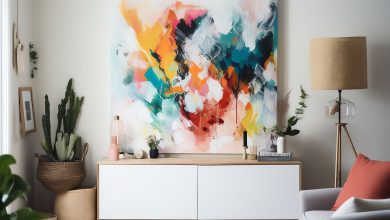How to Draw From Imagination: 5 Tips With Easy Drawing Ideas

How to Draw From Imagination: 5 Tips With Easy Drawing Ideas
People who are interested in cool drawing from imagination do not think about abstract how to draw art. Rather, they want to bring their creative vision to life, for example, to draw a picture realistically – a fairy, a dragon, or a more everyday scene. Then we call these arts “drawing from the imagination.” So, if you want to illustrate your fantasy story or impress your friends, here are some tips for drawing from imagination.
-
Use memory
Drawing from imagination is 3d drawing from memory – it is simply using long-term memory to pick pieces of memory together to create something new.
Let’s say you want to draw a mermaid. Instead, you are drawing a woman with a fishtail and long hair. You are collecting memories – fish scales, a model from a magazine, a rock from a landscape painting you saw somewhere.
No matter how far your imagination is, you are still using elements of reality.
-
Learn to draw what you see
Leonardo da Vinci said: “You cannot draw what you cannot see.” Most artists, even cartoonists, use real-life observations as the basis for their drawings. Fantasy artists have models to pose for them.
It is very useful to train “watching.” To do this, try to visit museums and various art exhibitions more often. You can also study paintings by famous authors in Internet resources. If you find it difficult to figure it out on your own, read the description, for example, on this resource – a stranger painting by Ivan Kramskoy.
The anime artist from Cowboy Bebop bought a real corgi dog to watch it move around the office. Sometimes artists make models out of cardboard, toys, and toy animals and light them with a table lamp to help them visualize their scene.
-
Learn to build perspective
Perspective is one of the artist’s best tools to convince the eye that something is real. Mastering perspective is essential. Practice one-point and two-point painting until you can do it without thinking about it. When you create a drawing, use perspective and emphasize its effects to enhance the three-dimensional shape.
-
Learn to work with the light source and tonal stretch
When drawing from imagination, be mindful of your light source. The fall of light on an object tells us a lot. Light travels in a straight line from the source. For sunlight, this effectively means parallel lines – all shadows will point in the same direction. But the shadows from a street lamp or overhead light will change.
Visualize the lighting conditions in your image and make sure you are using the full range of tonal values – bright highlights, dark shadows.
-
Sketch often
The best way to learn to paint with your imagination is to continue painting from life and photographs, focusing on what you want to create. For example, if they are people, draw them from all sides and in every pose. You will know how to draw a shape very well. Then, apply the same to what you want to paint.
Drawing is primarily about seeing and understanding your subject. In addition, observing and drawing often trains your visual memory, so you will have a supply of mental images to draw on.
Drawing is not as out of reach as many people think. Yes, not everyone can write masterpieces, but anyone can enjoy creating their watercolor, oil painting, graphic sketch, or simple sketch. Of course, not everything will work out right away, but patience and desire will help achieve certain personal success. So, take every opportunity to paint. In this article, we will present excellent drawing life hacks for beginners. Try repeatedly, train your hand and eye, do not give up if something does not work out. Only then can you get closer to your dream of learning to draw.
Handmade How you hold a brush or pencil will largely determine the success of your future drawing. Improper positioning of the hand uses the wrong muscles. Fatigue quickly sets in, pleasure from the process is lost. Accept the fact that different drawing techniques require different positions of the hand and fingers: for pencil shading, for example, the upper grip, the hand rests on the table as to when writing – for drawing subtle, intricate elements, etc. If, for example, you decide to draw with both a pencil and a brush, you will have to work out a different set of the brush.
Don’t be afraid to experiment, don’t be afraid of failure – just draw, make mistakes, learn and move forward! So let’s go and start your drawing journey.



